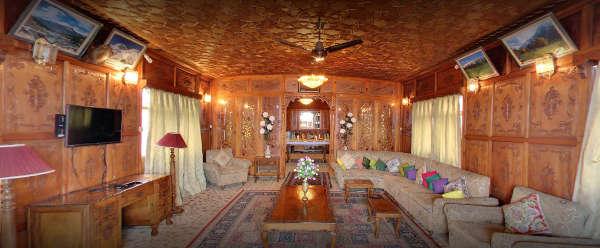The Music of Jammu & Kashmir reflects the rich musical heritage and cultural legacy of the Jammu & Kashmir region of India and Pakistan. Traditionally the music composed by ethnic Kashmiris has a wide range of musical influences in composition. Due to Kashmir's close proximity to Central Asia, Eastern Asia and Southern Asia, a unique blend of music has evolved encompassing the music of the 3 regions. But, overall, Kashmiri music is closer to Central Asian music, using traditional Central Asian instruments and musical scales.
Chakri
Chakri is one of the most popular folk music played in Kashmir. Chakri is played with the musical instruments like Harmonium, Rabab, Sarangi and Nout. Chakri was also used to tell stories like fairy tales or famous love stories "Yousuf-Zulaikha", "Laila-Majnun" etc. Chakri ends with the Rouf, though Rouf is a dance form but few ending notes of Chakri which are played differently and on fast notes is also called Rouf.
Famous Chakri Players
- Gulam Hassan Sofi
- Abdur Rasheed Hafiz
- Gulam Nabi Sheikh
- Gulam Mohammad Dar
Rouf is a traditional dance form usually performed by girls on certain important occasions like Eid, Marriage and other functions. Rouf includes dancing and singing simultaneously. No musical instrument is required in this. Girls arrange themselves in two or three rows, each row has 5-6 girls. Each row of girls then move one step forward and then back in swaying motion while singing the Rouf song or Wanwun. Usually Rouf is called Wanwun when played in marriages.
Ladishah
Ladishah is one of the most important part of Kashmiri music tradition. Ladishah is a sarcastical form of singing. The songs are sung resonating the present social and political conditions and are utterly humorous. The singers move from village to village performing generally during the harvesting period. The songs are composed on the spot on issues relating to that village, be it cultural, social or political. The songs reflect the truth and that sometimes makes the song a bit hard to digest, but they are totally entertaining.
Sufiana Kalam
Sufiana Kalam is the classical music of Kashmir, which uses its own Ragas (known as Maqam), and is accompanied by a hundred-stringed instrument called the Santoor, along with the Kashmiri Saz, Wasool, Tabala and Sitar. Sufiana Kalam has been popular in Kashmir since arriving from Iran in the 15th century and has been the music of choice for Kashmiri Sufi mystics. The dance based on the sofiyiana kalam is the hafiz nagma.
Classical
Music in Kashmir performed by Hindus is mainly influenced by Indian classical music, using instruments such as the Sitar. Sarangadeva who wrote the famous Sangeet Ratnakara was a Kashmiri. Music and musical instruments find mentioned in the earliest texts like the Nilmatapurana and Rajatarangini by Kalhana. The very fact that a Kashmiri - Abhinavagupta (the great philosopher) who has written a commentary called Abhinavabharati on Bharata's Natyashatra shows how much of importance was given to music in the ancient times. The most popular folk instrument is Santoor (Shat-tantri-veena), a hundred string percussion instrument which is played by Goddess Sharada (the Goddess of learning and art in ancient Kashmir). Henzae is a music form sung by Kashmiri Pandits on religious and cultural festivals.


